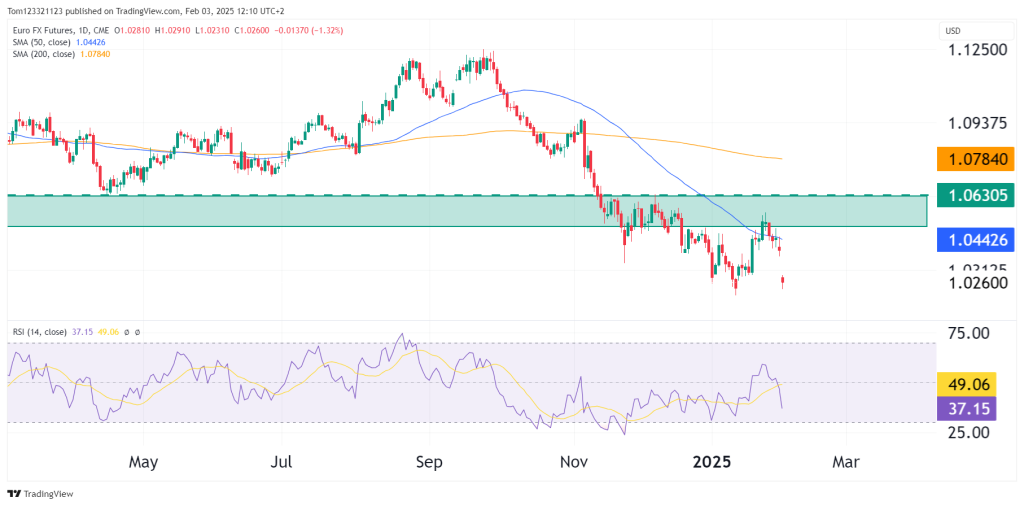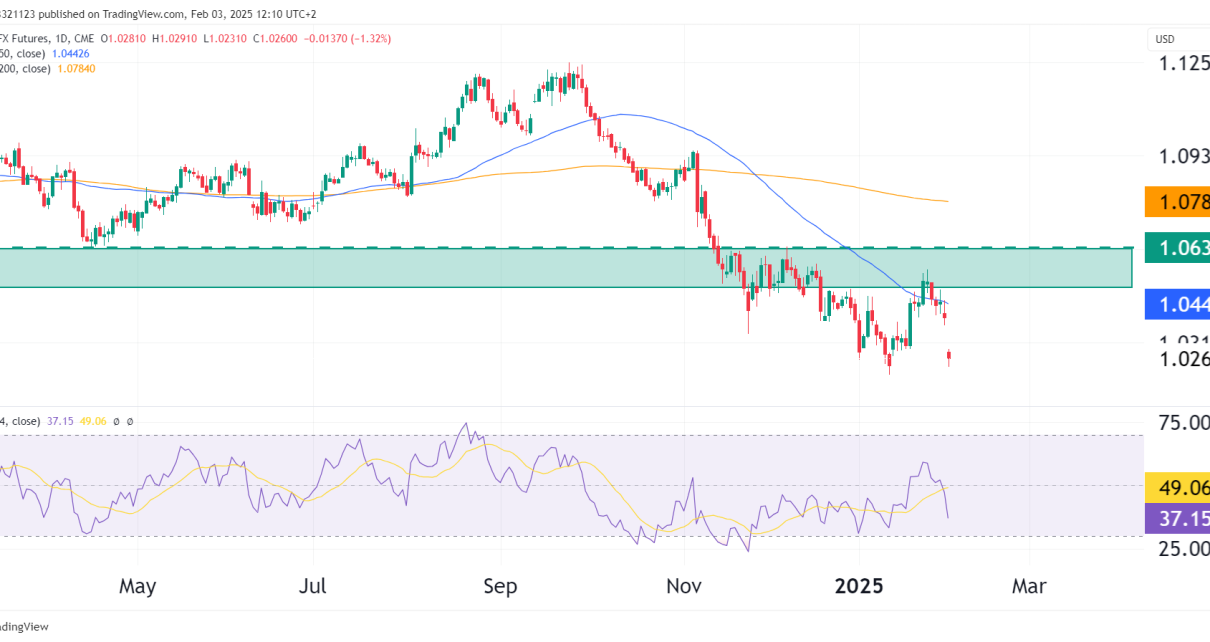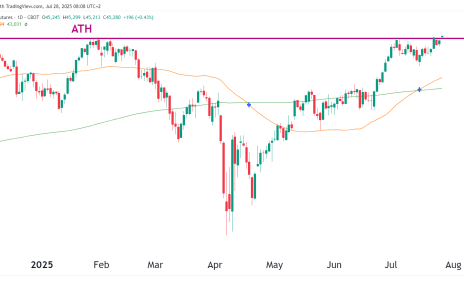Introduction
Euro FX futures (6E) are continuing their downtrend. The latest decline follows a sharp rejection from the 1.06305 resistance zone, which had previously acted as support before turning into resistance. The primary catalyst for this move remains the rallying U.S. dollar, fueled by economic optimism surrounding President Trump’s fiscal and trade policies.

Fundamental drivers behind the Euro’s decline
U.S. Dollar Rally Driven by Trump Policies
- Corporate tax cuts and deregulation: Investors are pricing in business-friendly policies under the Trump administration, leading to a stronger dollar as capital flows into U.S. assets.
- Trade negotiations: Trump’s renewed stance on trade protectionism has added to global market uncertainty, further boosting demand for the safe-haven dollar.
- Fiscal stimulus speculation: Hints of new infrastructure spending and tax incentives have led to rising U.S. bond yields, making the dollar more attractive compared to the euro.
Diverging Central Bank Policies (Fed vs. ECB)
- The Federal Reserve has maintained a hawkish stance, signaling that interest rates will remain high for longer than previously expected.
- The European Central Bank (ECB), in contrast, is now facing pressure to cut interest rates as economic data weakens across the Eurozone.
- This policy divergence has further weakened the euro against the dollar.
Weak Eurozone Economic Data
- Recent manufacturing PMI data out of Germany and France has shown contraction, raising fears of economic slowdown in the region.
- Lower growth expectations are increasing the likelihood of monetary easing from the ECB, adding downward pressure on the euro.
Technical analysis overview
Rejection from Key Resistance at 1.06305
- The 1.06305 level, which previously acted as strong support, has now turned into a key resistance zone.
- The euro attempted to reclaim this area but faced a strong rejection, leading to the current sell-off.
Breakdown Below Key Moving Averages
- The price is trading well below the 50-day SMA (1.04426) and 200-day SMA (1.07840), confirming a long-term bearish trend.
Support and resistance levels
Resistance Levels (Upside Targets if Reversal Occurs)
1.04426 (50-day SMA) – Short-term dynamic resistance that must be reclaimed for any bullish reversal.
1.06305 (Major Resistance Zone) – The key level that rejected price; a breakout above this would shift momentum slightly bullish.
1.07840 (200-day SMA) – Long-term resistance and a major hurdle for euro bulls.
Support Levels (Downside Targets)
1.02500 (Recent Low) – Immediate support; a break below this could accelerate selling pressure.
1.01500 – 1.02000 (Next Major Support Zone) – A breakdown below 1.02500 could target these levels.
1.0000 (Parity Level) – A psychological level that would come into play if the dollar rally continues aggressively.
Scenarios to watch
Bearish Case (Higher Probability – 70%)
- A confirmed breakdown below 1.02500 would likely lead to further downside toward 1.01500 – 1.02000 in the coming sessions.
- The strong dollar and weak euro fundamentals support continued selling pressure.
Bullish Case (Lower Probability – 30%)
- If the euro reclaims 1.04426 (50-day SMA), a move toward 1.06305 resistance could be possible.
- However, the overall trend remains bearish unless a major catalyst reverses sentiment.
Trade setups
Bearish Setup (Higher Probability Trade)
- Entry: Short positions on a confirmed breakdown below 1.02500.
- Targets: 1.01500, then 1.0000 (parity level) if momentum persists.
- Stop-Loss: Above 1.03000 to minimize risk.
Bullish Setup (Reversal Trade, Lower Probability)
- Entry: Long positions only if price reclaims 1.04426 with confirmation.
- Targets: 1.06305, with an extended target at 1.07840.
- Stop-Loss: Below 1.03800 to manage downside risk.
Final Thoughts
The euro remains under heavy selling pressure, driven by a combination of hawkish Fed policy, Trump’s pro-dollar economic policies, and weak Eurozone economic data. The recent rejection from 1.06305 resistance has reinforced the bearish trend, with a breakdown below 1.02500 likely leading to further downside.
Unless the ECB signals a policy shift or the dollar rally slows, the path of least resistance for the euro remains downward. Traders should watch key support levels and monitor U.S. economic developments for further confirmation of the trend.



